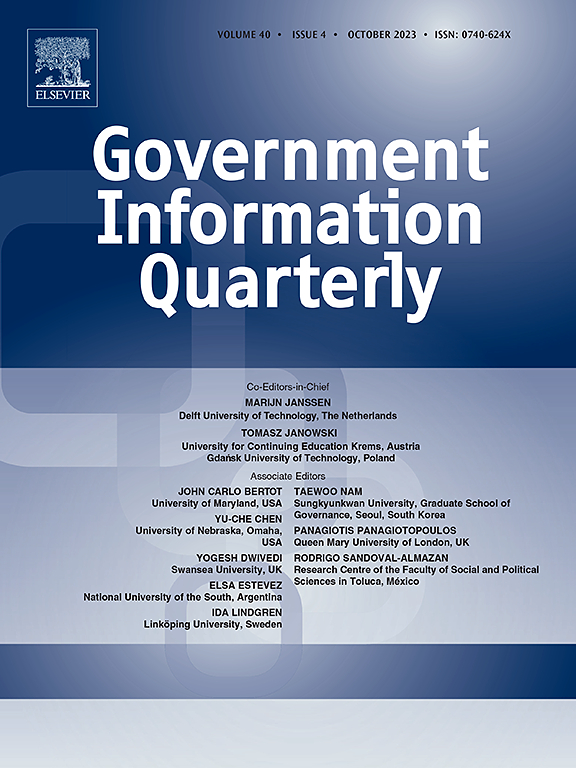Navigating power dynamics in the public sector through AI-driven algorithmic decision-making
IF 10
1区 管理学
Q1 INFORMATION SCIENCE & LIBRARY SCIENCE
引用次数: 0
Abstract
Public sector institutions are under increasing pressure to deliver greater public value through disruptive technologies, despite ongoing pressures. In response to evolving technological change and an abundance of information, many public sector organisations have adopted Artificial Intelligence (AI) to improve decision-making and generate social value. While AI's role in public administration is gaining attention, little is known about how its use alters internal power dynamics. This research uses a qualitative case study approach, drawing on 30 semi-structured interviews with operational managers and various analysts in a large public institution to explore how AI influences power relations. Findings reveal that AI use creates tensions among operational managers, organisation-wide analysts and the increasingly influential hybrid/in-house analysts who possess both technical and institutional expertise. The study presents and empirically validates the AI Power Enactment Framework and introduces the AI Power Matrix, providing policymakers with a structured tool to evaluate AI projects. These insights can inform targeted funding strategies and capacity building, helping to lessen dependence on hybrid analysts and enhance the success of AI implementation in the public sector.

通过人工智能驱动的算法决策,引导公共部门的权力动态
公共部门机构面临越来越大的压力,需要通过颠覆性技术创造更大的公共价值,尽管压力持续存在。为了应对不断发展的技术变革和丰富的信息,许多公共机构采用人工智能(AI)来改善决策和创造社会价值。虽然人工智能在公共行政中的作用越来越受到关注,但人们对其使用如何改变内部权力动态知之甚少。本研究采用定性案例研究方法,对一家大型公共机构的运营经理和各种分析师进行了30次半结构化访谈,以探索人工智能如何影响权力关系。调查结果显示,人工智能的使用在运营经理、组织范围内的分析师以及拥有技术和机构专业知识的越来越有影响力的混合/内部分析师之间造成了紧张关系。该研究提出并实证验证了人工智能权力制定框架,并引入了人工智能权力矩阵,为政策制定者提供了评估人工智能项目的结构化工具。这些见解可以为有针对性的筹资战略和能力建设提供信息,有助于减少对混合分析人员的依赖,并提高人工智能在公共部门实施的成功率。
本文章由计算机程序翻译,如有差异,请以英文原文为准。
求助全文
约1分钟内获得全文
求助全文
来源期刊

Government Information Quarterly
INFORMATION SCIENCE & LIBRARY SCIENCE-
CiteScore
15.70
自引率
16.70%
发文量
106
期刊介绍:
Government Information Quarterly (GIQ) delves into the convergence of policy, information technology, government, and the public. It explores the impact of policies on government information flows, the role of technology in innovative government services, and the dynamic between citizens and governing bodies in the digital age. GIQ serves as a premier journal, disseminating high-quality research and insights that bridge the realms of policy, information technology, government, and public engagement.
 求助内容:
求助内容: 应助结果提醒方式:
应助结果提醒方式:


